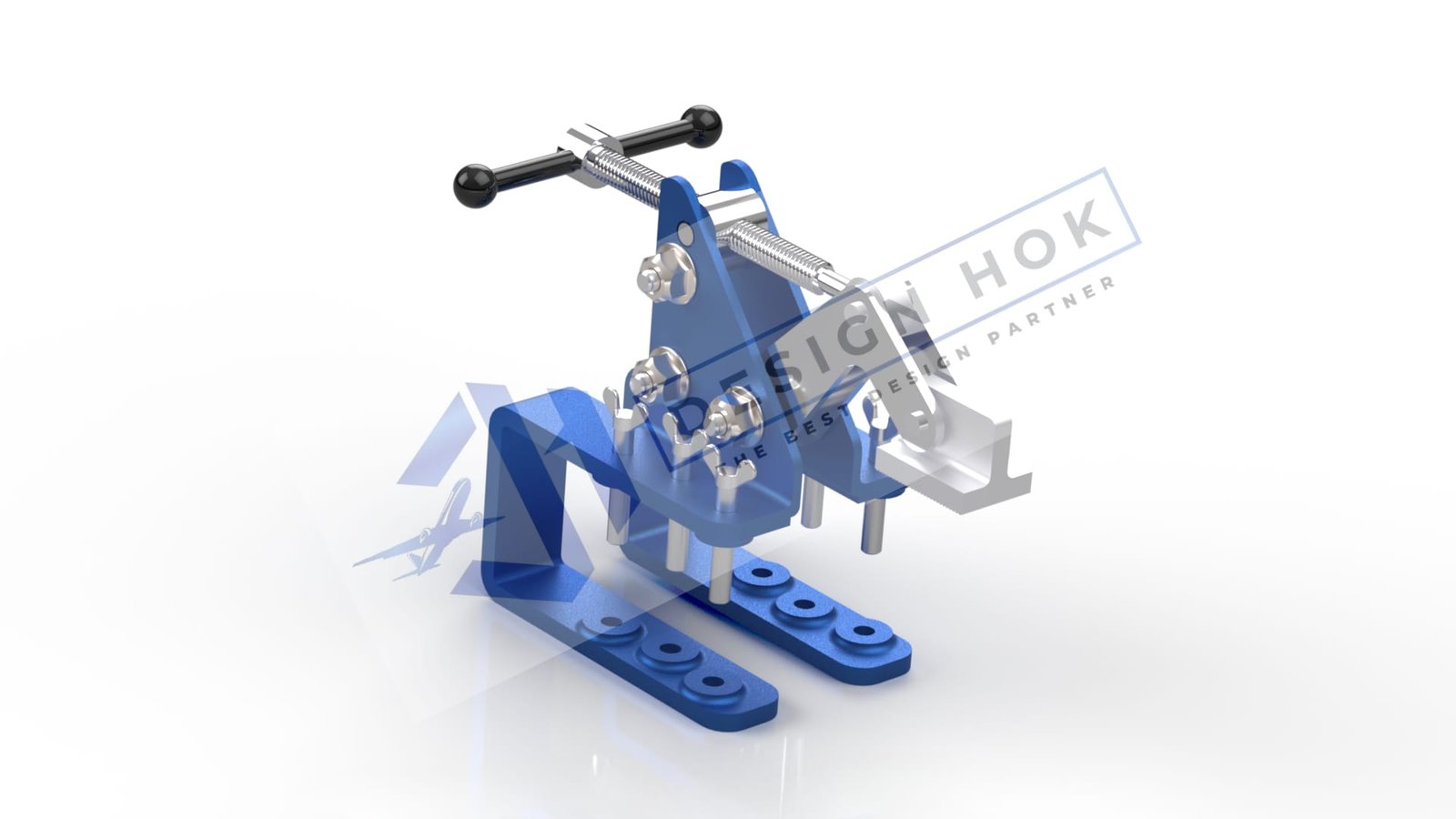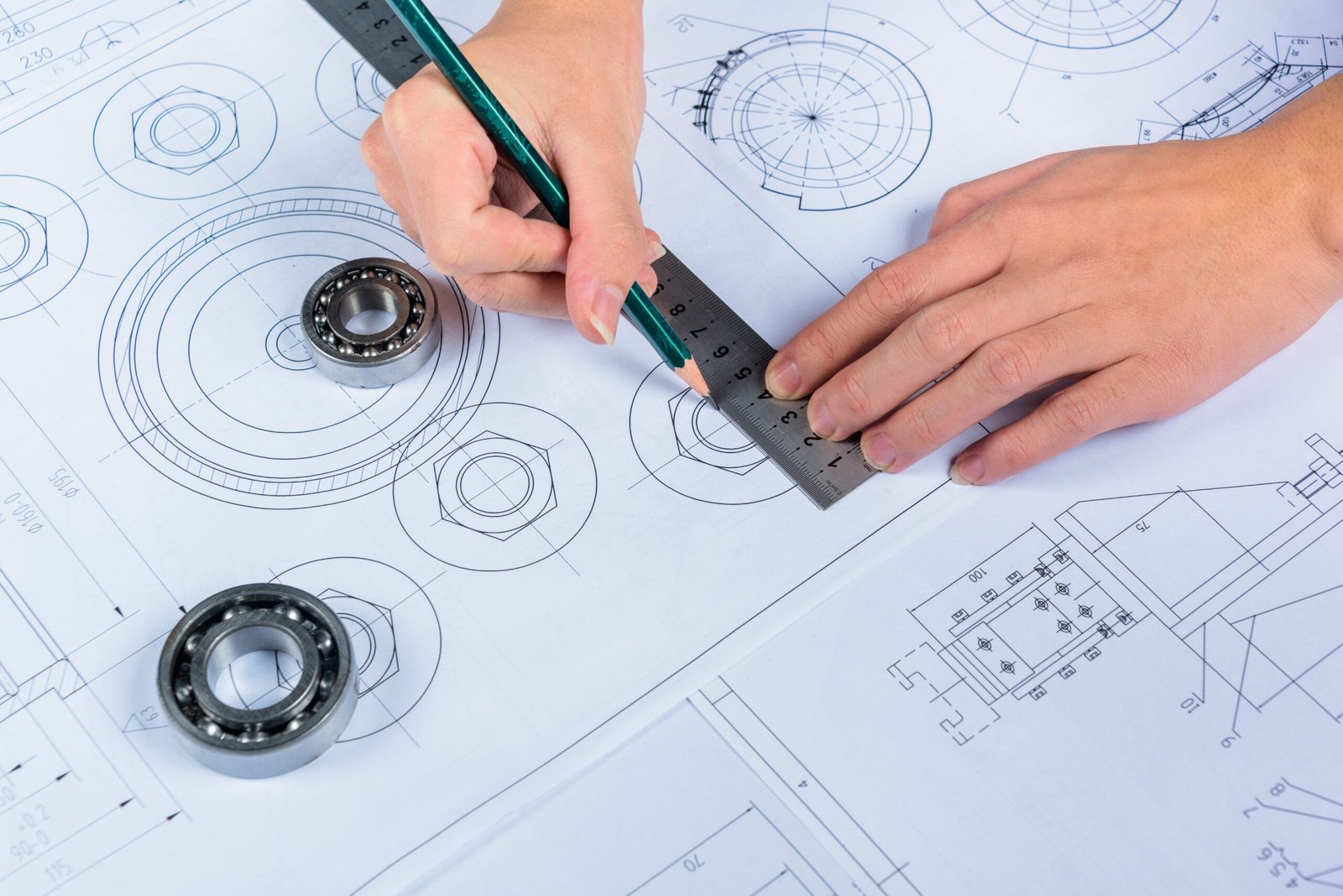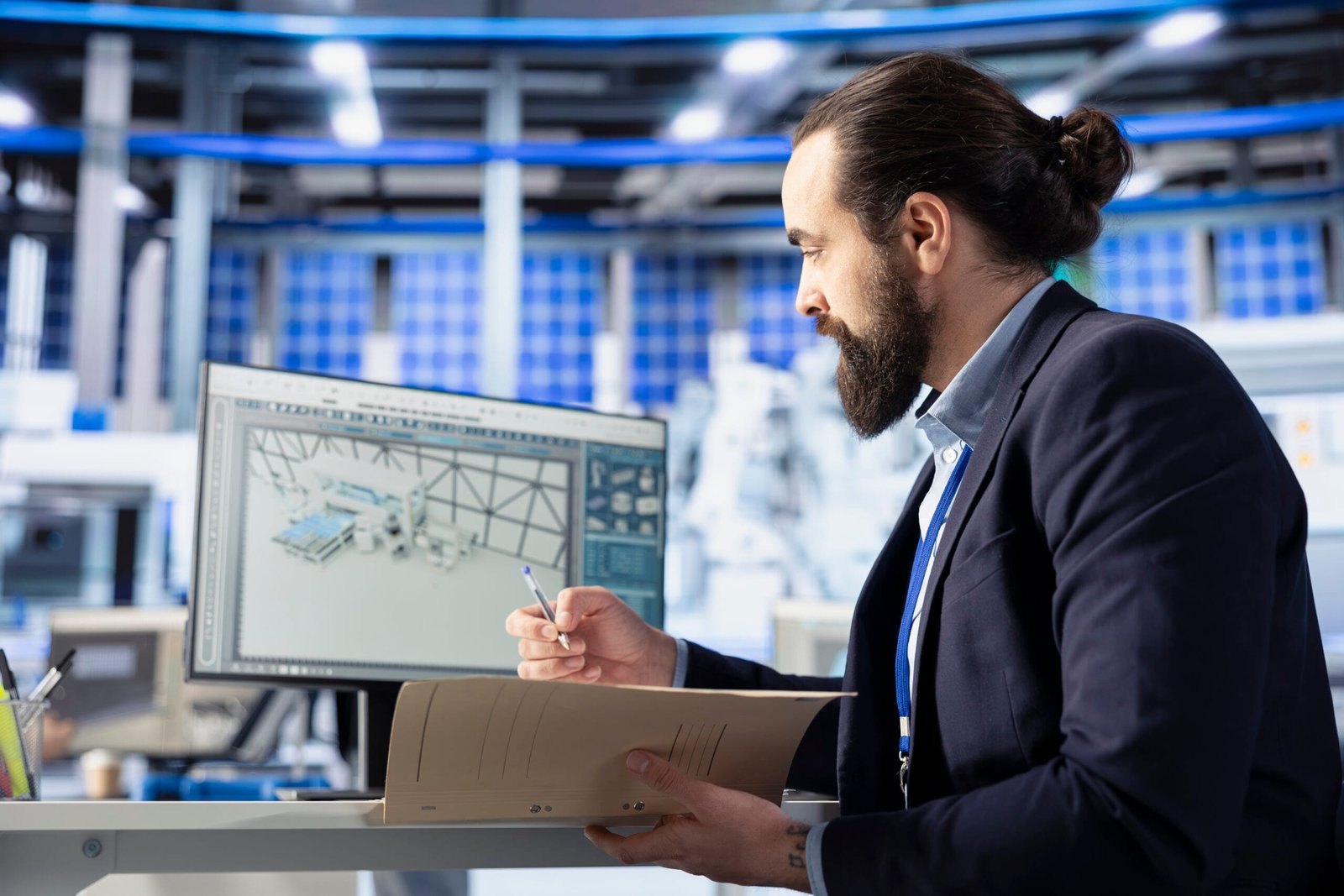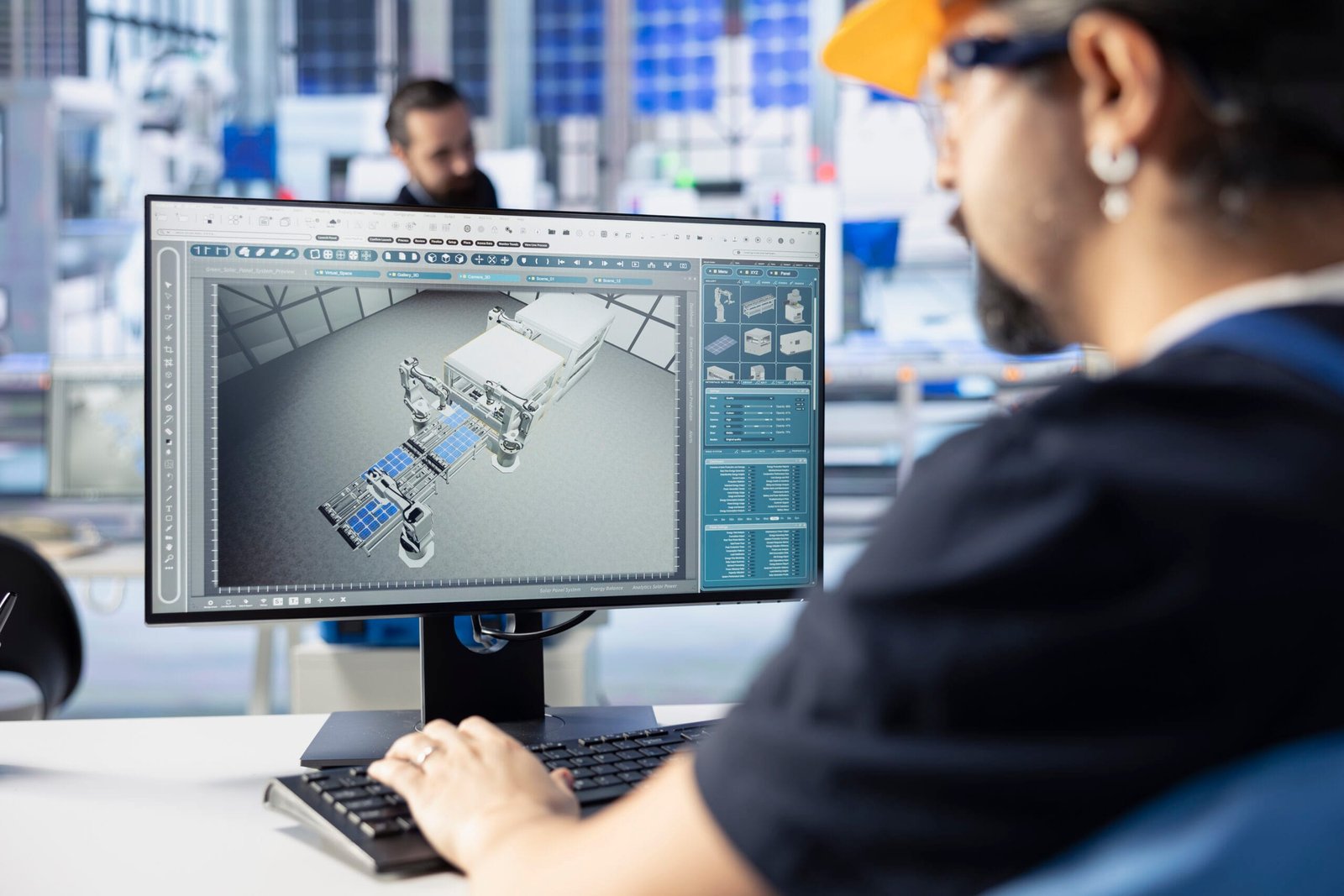Before diving deep into what aerospace engineers do, it’s important to understand how DesignHok contributes to this field. As a Top-Rated Plus Design Agency with over fourteen years of experience, we specialize in aerospace CAD drafting, simulation modeling, and mechanical design compliance. When it comes to what do aerospace engineers do, we don’t just observe—we actively support their mission by providing precise technical drawings and performance-driven solutions. At DesignHok, we align our expertise with what aerospace engineers do every day: innovate, solve complex problems, and push the boundaries of air and space technology.
At DesignHok, You Will Find
- 3D/2D Aerospace CAD Services
Draw aircraft parts and space structures with detailing that keeps an eye on tolerances. - AS 9100 & ISO Drafts
We know standards for making things in aerospace and writing them down. - Mechanical Sim. & CFD Look
See how air moves, check for strength, and watch heat flow through plane parts. - Fast Model Making & Old Part Study
We turn ideas into ready-to-make pieces with top modeling tools. - Special Tool Plans for Plane Part Lines
Keeping work smooth by planning jigs, holders, and tool items.
Cooperation with the aviation startups and research institutes, from UAV drones up to propulsion modules. Now that you know the tools and value our company brings into play, let us decompose what aerospace engineers do across industries and specializations.
Introduction: What Do Aerospace Engineers Do and Why It Matters
Aerospace engineers are the creators of flight and space systems – the systems that ensure safe air travel, together with the realization of all dreams relating to space exploration. What is it that aerospace engineers do exactly? They plan, test, and supervise the manufacture of aircraft, satellites, missiles, and spacecraft. The plan is not all; rather, it embraces solving problems regarding speed, gravity, drag, propulsion, as well as materials and human safety in extreme conditions.
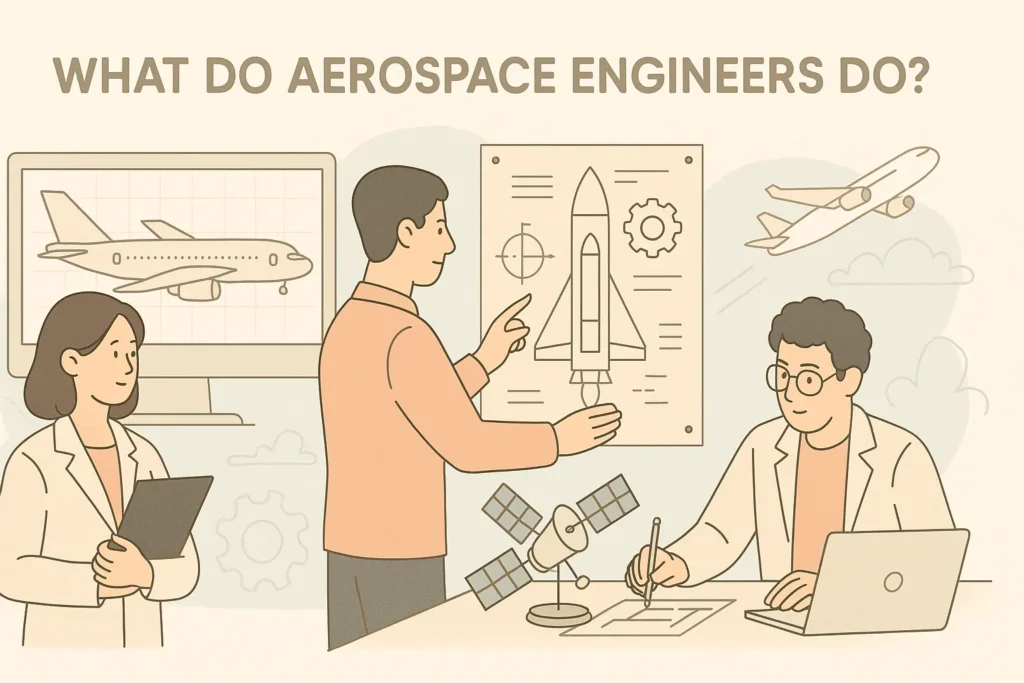
1. Conceptual Design: From Idea to Aerodynamic Blueprint
Before exploring in detail what do aerospace engineers do, it’s essential to see how DesignHok plays a key role in supporting their work. With over fourteen years of experience as a Top-Rated Plus Design Agency, we specialize in aerospace CAD drafting, mechanical design compliance, and simulation modeling. When asking what aerospace engineers do, the answer often involves solving complex technical problems—and that’s exactly where we come in. At DesignHok, our services are designed to align with what do aerospace engineers do every day: design, innovate, and transform ideas into airborne and space-ready solutions.
Is it possible to build within weight and cost?
2. Aerodynamics and Thermodynamics Analysis
The understanding of how flow behaves around surfaces forms the core answer to what do aerospace engineers perform in a development process.
With the use of computational fluid dynamics, aerospace engineers typically apply airflows over wings, fuselage, and propellers, efficiency optimization as well as stability. Thermodynamic modeling guarantees engine operations under all extremes of pressure and temperature differences that would be encountered, particularly for space applications.
CFD and thermal simulation tools by DesignHok are very instrumental at this stage since they support real-time data-based modeling and iterative refinement.
3. Materials & Structural Integrity
Those professionals study metals, polymers, and composite materials. They try to analyze options for materials under extreme conditions of stress corrosion and fatigue. This includes testing vibration resistance, thermal expansion, tensile strength, and even bulletproofing (for defense applications). DesignHok’s material selection and FEA (Finite Element Analysis) tools assist in ensuring structural longevity as well as safety in mission-critical applications.
4. Propulsion Systems
Be it a subsonic jet or a deep-space probe, the propulsion aspect remains the heart of aerospace innovation. Aerospace engineers are responsible for developing high-efficiency jet engines, rocket motors, and ion thrusters. In collaboration with fuel specialists and combustion analysts, continuous efforts are initiated to further thrust-to-weight ratio improvements as well as enhancements in fuel economy and emissions.
We provide support to our clients in engine mount design as well as flow optimization and simulation applicable to propeller, turbine, and rocket systems.
5. Flight Control and Avionics Systems
A minor, though significant, response to what do aerospace engineers do is to develop autopilot systems, sensors, and software integration. They assist in the design of flight control surfaces and actuator systems, as well as embedded avionics that guide the aircraft and spacecraft either autonomously or with pilot input. DesignHok takes pride in mounting provisions, the layout of wiring harnesses, and sensor housing integration that result in electronic and hardware compatibility being achieved reliably.
6. Testing, Quality Assurance & Compliance
When parts are designed and prototyped, aerospace engineers conduct very intense testing phases—this is actually the phase where most people get to practically understand what aerospace engineers do.
- Wind tunnel tests
- Flight tests
- Static & fatigue load tests
- Thermal vacuum test systems for space-bound modules
DesignHok makes certain that every project happens to falls under AS 9100 compliance, FAA regulation, and NASA spec guideline umbrellas. Technical drawings are quality-checked and version-controlled for production-ready use.
7. Maintenance & Failure Investigation
The work doesn’t stop after takeoff. A key part of what aerospace engineers do is analyzing performance post-deployment and diagnosing issues.
If a component fails mid-mission, aerospace engineers perform root cause analysis using data logs, visual inspection, and digital twin modeling. They suggest design corrections or material upgrades to prevent recurrence.
We provide support documentation, post-deployment testing tools, and redesign options through collaborative feedback loops with client teams.
8. Career Specializations in Aerospace Engineering
To fully answer the question of what aerospace engineers do, one must understand how diverse the field is. Some specializations include:
- Structural engineering
- Aerodynamics & CFD
- Guidance, Navigation & Control
- Satellite Systems Engineering
- Avionics and Embedded Software
- Propulsion Systems
- UAV & Drone Design
DesignHok caters to multiple of these branches, especially structural, aerodynamic, and mechanical tool design, which offers solutions aligned with the career for both engineers and organizations.
9. Industry Challenges
There’s a lot of thrill in this industry, but what do aerospace engineers do?
- Extremely tight tolerances and safety margins
- Unforgiving testing environments
- Multimillion-dollar risk profiles
- Long development cycles, and then there are regulatory hurdles
But rewards are very high. In innovation. In contributing to society. Makes it a highly fulfilling career.
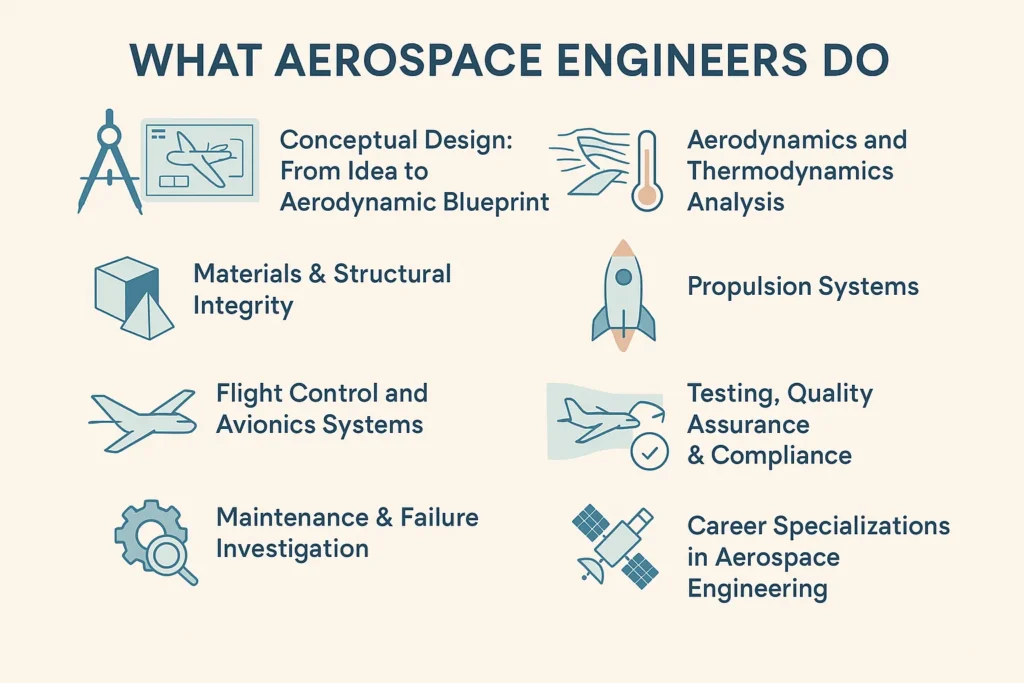
XO Insight: The DesignHok Difference
We’re not just making drawings. We’re providing aerospace engineering support that flies!
DesignHok isn’t your typical design firm—we are deeply rooted in the principles behind what do aerospace engineers do. Our work goes beyond aesthetics by integrating engineering logic, manufacturing feasibility, and regulatory expertise into every aerospace project. We don’t just offer software; we provide intelligent collaboration with engineers, pilots, and manufacturers worldwide, reflecting the true nature of what do aerospace engineers do on a global scale.
Whether it’s UAV designs for startups or compliance-ready documentation for MRO facilities, we redefine aerospace support by staying aligned with what do aerospace engineers do every day—designing, innovating, and ensuring performance and safety in the skies.
FAQ: What Do Aerospace Engineers Do?
Q1: Do aerospace engineers only work on aircraft?
No, they also perform work on missiles, drones, satellites, and ground systems for launching, defending, and exploring space.
Q2: Are aerospace engineers also involved in software?
Yes. Anybody in avionics, GNC (guidance, navigation, and control), or autonomous flight systems writes a lot of software.
Q3: What industries hire aerospace engineers?
Defense. Space agencies like NASA. Civil aviation. UAV firms. Even automotive and renewable energy companies.
Q4: What tools do aerospace engineers use?
CAD, CFD/FEA, MATLAB/Simulink are commonly used. CATIA, ANSYS, and SolidWorks constitute some applications from within an industry many times embraced.
Conclusion: The Real Answer to What Do Aerospace Engineers Do
Before diving into the details of what do aerospace engineers do, it’s important to understand how DesignHok actively contributes to their success. As a Top-Rated Plus Design Agency with over fourteen years of specialized experience, we focus on aerospace CAD drafting, simulation modeling, and mechanical design compliance. When exploring what do aerospace engineers do, you’ll find that their work demands precision, innovation, and technical expertise—qualities that define our approach. At DesignHok, we tailor our services to complement exactly what do aerospace engineers do: design cutting-edge aircraft, develop space systems, and solve real-world engineering challenges with forward-thinking solutions.

